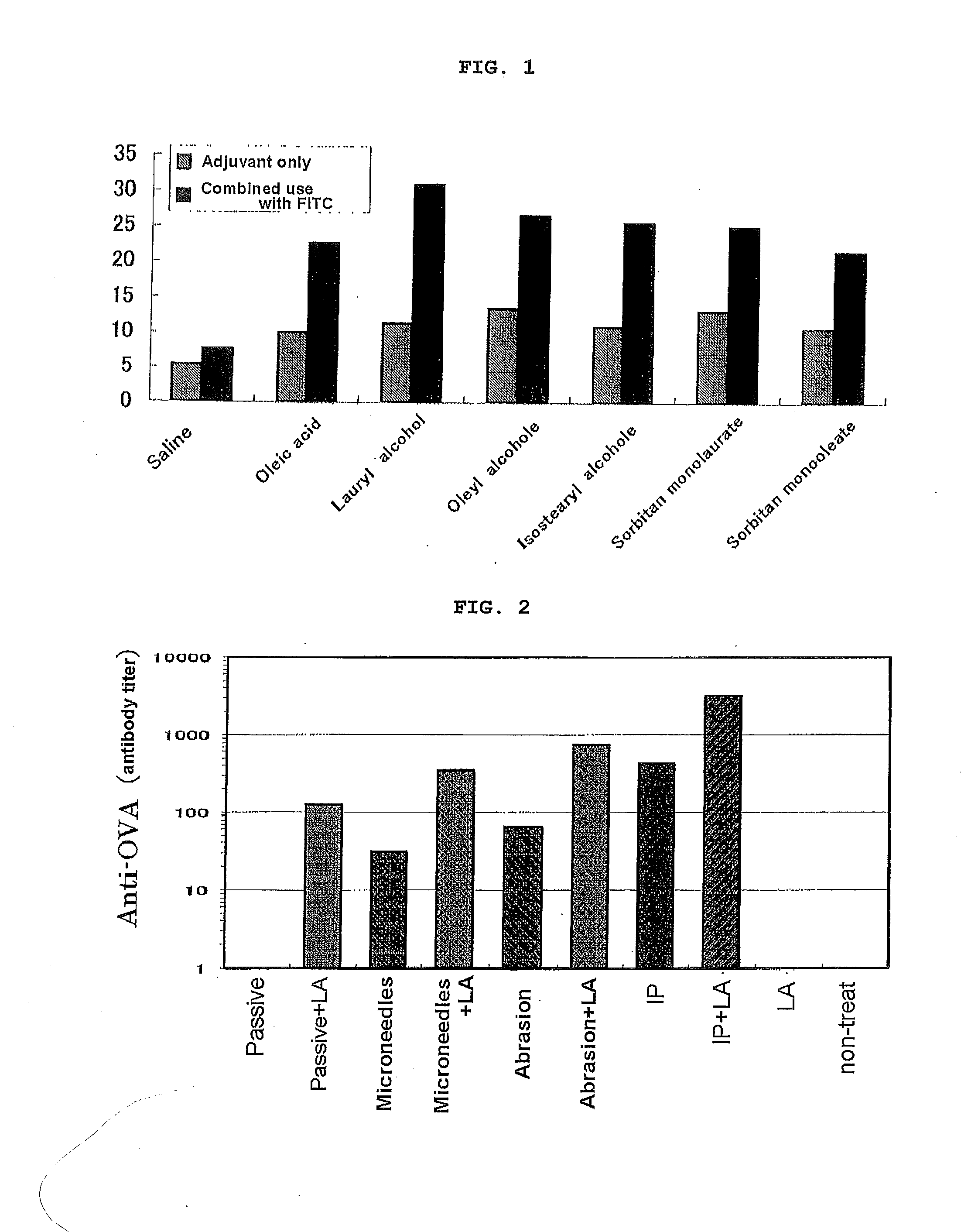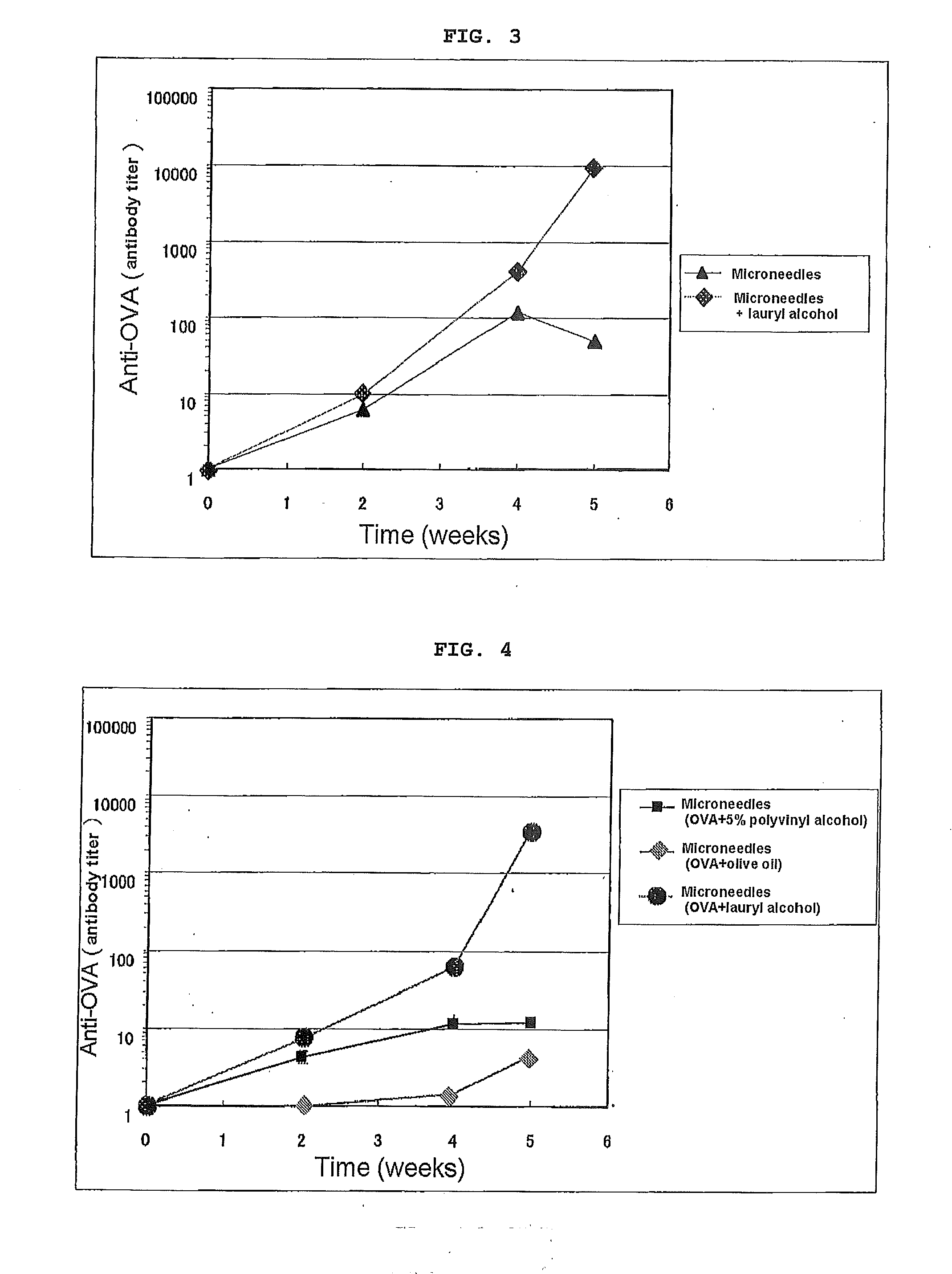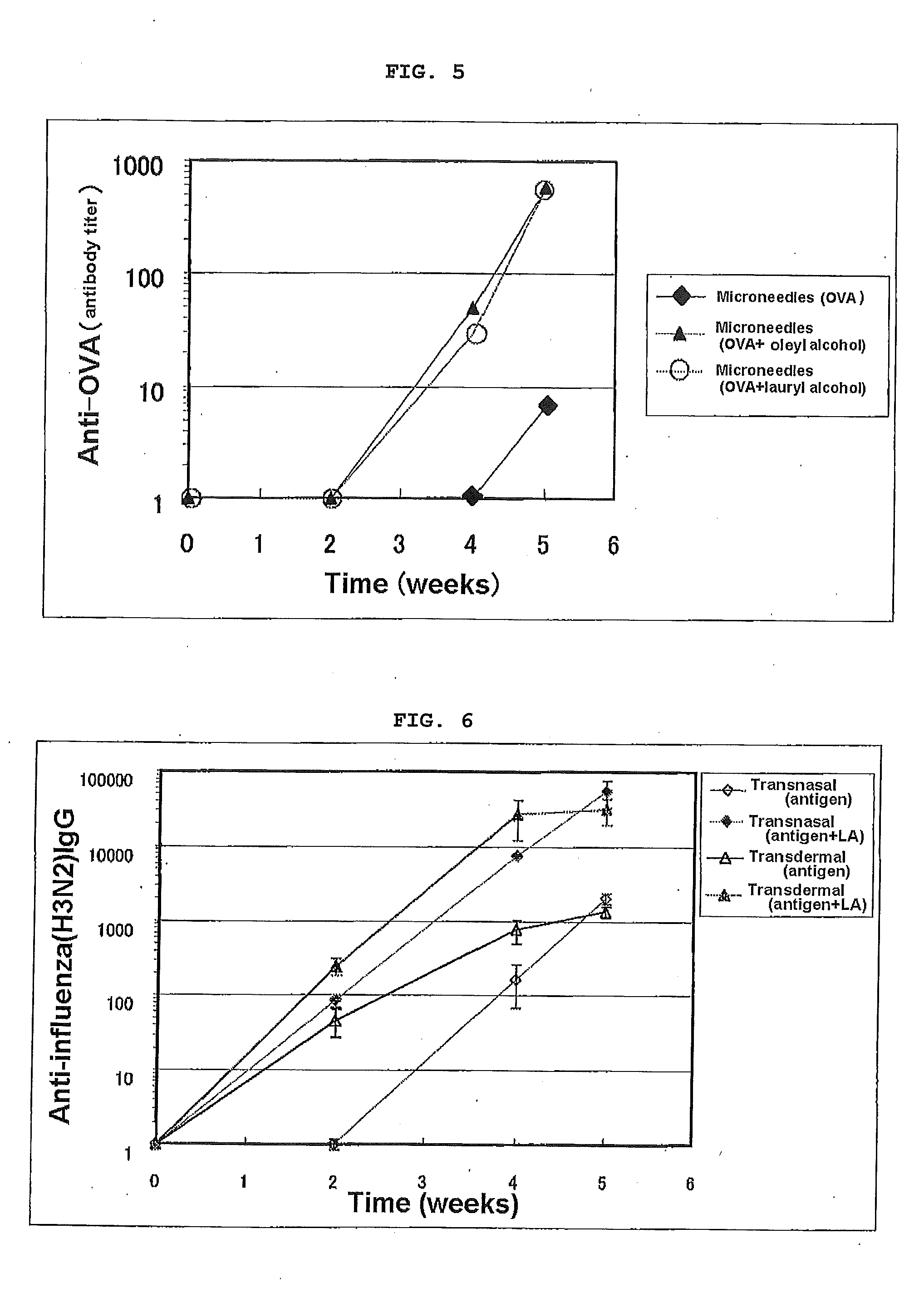Adjuvant or pharmaceutical preparation for transdermal or transmucosal administration
a technology for transdermal or transmucosal administration and adjuvants, which is applied in the directions of immunological disorders, antibody medical ingredients, and immunological disorders, etc. it can solve the problems of severe local tissue disorder, aluminum salt absorption, and application, so as to achieve efficient and safe absorption and enhance the effect of pharmaceutical preparations
- Summary
- Abstract
- Description
- Claims
- Application Information
AI Technical Summary
Benefits of technology
Problems solved by technology
Method used
Image
Examples
example 1
[0088]The abdomen of 7 to 8 W male BALB / c mice was shaved, and 50 uL of an acetone solution (50%) of a candidate adjuvant was transdermally administered. On the other hand, for a group for which an antigen hapten was used in combination, 50 uL of a 1:1 mixture of an FITC solution (5 mg / mL in acetone) and a solution of the adjuvant was transdermally administered to the abdomen. 5 days later, lymph node (cervix, groin) was removed, and the intensity of expression of MHC Class II molecules by lymph cells was analyzed by flow cytometry (FIG. 1).
[0089]As shown in FIG. 1, in transdermal administration with a low molecular weight adjuvant such as a free fatty acid (oleic acid), a fatty acid ester (sorbitan monolaurate, sorbitan monooleate), or an aliphatic alcohol (lauryl alcohol, oleyl alcohol, isostearyl alcohol), a remarkable increase in lymph cell count was observed. That is, it was confirmed that a low molecular weight free fatty acid, a fatty acid ester, and an aliphatic alcohol have...
example 2
[0090]A group for which the abdomen of 7 to 8 W male BALB / c mice was shaved and 25 uL of candidate adjuvant (undiluted) was intradermally administered and a group for which 50 uL of an acetone solution (50%) was transdermally administered were scored for skin irritation (Table 1).
[0091]As shown in Table 1, it was confirmed that transdermal administration of low molecular weight adjuvants such as fatty acid esters (polyethylene glycol monolaurate, sorbitan monolaurate) and aliphatic alcohols (lauryl alcohol, oleyl alcohol, isostearyl alcohol, octyldodecanol) did not cause skin irritation, and compared with intradermal administration there was minimal skin irritation.
TABLE 1Skin Irritation Score (intradermal administration vstransdermal administration)Skin irritation scoreSkin irritation evaluationIntradermalTransdermalAdjuvantadministrationadministrationLauryl alcohol+++−Oleyl alcohol+++−Isostearyl alcohol++−Octyldodecanol+−Polyethylene glycol monolaurate++−Sorbitan monolaurate++−
example 3
[0092]The abdomen of 7 to 8 W male BALB / c mice was shaved, and the animals were divided into an untreated group and a group to which an antigen was intradermally administered. OVA was dissolved in physiological saline and adjusted to give 10 ug / head, and for an OVA-only group 25 uL of the OVA aqueous solution was intradermally administered. For groups in which there was combined use with various types of adjuvant, immediately after the OVA solution was intradermally administered, 25 uL of the adjuvant solution was transdermally administered (coated) via the skin surface of the abdomen. Administration was carried out at 0, 2, and 4 W, blood was collected at 2, 4, and 5 W, and the OVA-specific IgG antibody titer after 2, 4, and 5 W was measured by ELISA. The results of 5 W data are given in Table 2.
[0093]As shown in Table 2, when the change in antigen-specific IgG was examined employing in combination intradermal administration of the antigen ovalbumin and transdermal administration o...
PUM
| Property | Measurement | Unit |
|---|---|---|
| wt % | aaaaa | aaaaa |
| wt % | aaaaa | aaaaa |
| needle length | aaaaa | aaaaa |
Abstract
Description
Claims
Application Information
 Login to View More
Login to View More - R&D
- Intellectual Property
- Life Sciences
- Materials
- Tech Scout
- Unparalleled Data Quality
- Higher Quality Content
- 60% Fewer Hallucinations
Browse by: Latest US Patents, China's latest patents, Technical Efficacy Thesaurus, Application Domain, Technology Topic, Popular Technical Reports.
© 2025 PatSnap. All rights reserved.Legal|Privacy policy|Modern Slavery Act Transparency Statement|Sitemap|About US| Contact US: help@patsnap.com



